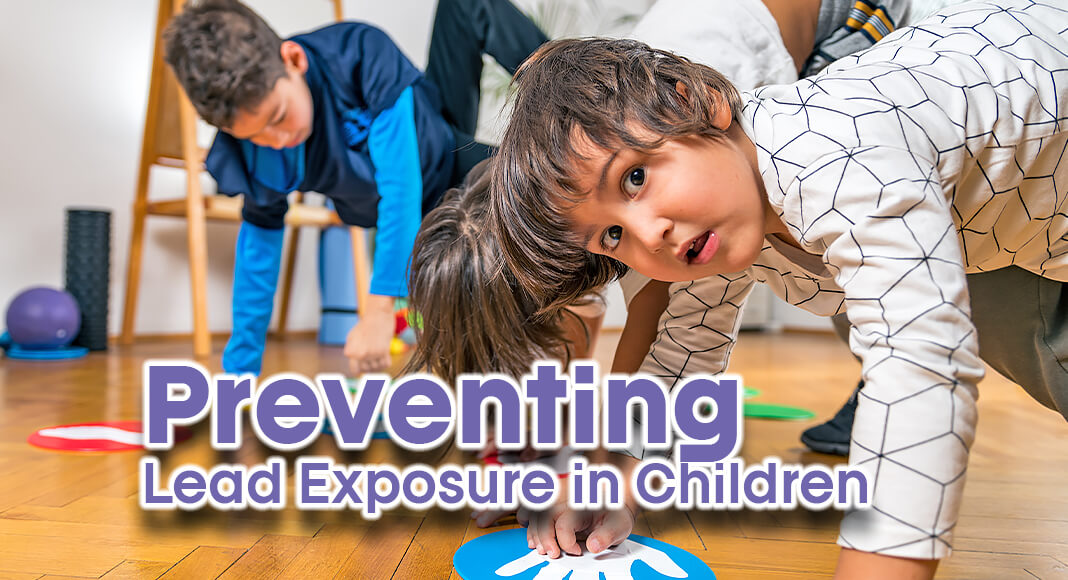
Mega Doctor News
The harmful effects of childhood lead exposure can be prevented. The key is to keep children from coming in contact with lead. Learn how to prevent children’s exposure to lead.
ead in paint, soil, air, water, food, cosmetics, medicines, toys, and consumer products is invisible to the naked eye and has no smell. No safe blood lead level in children has been identified.
Exposure to lead can seriously harm a child’s health, including
- Damage to the brain and nervous system
- Slowed growth and development
- Learning and behavior problems
- Hearing and speech problems
There are many ways that parents can reduce children’s exposure to lead before they are harmed. Lead hazards in a child’s environment must be identified and controlled or removed safely.
Common Ways Children Can Come in Contact with Lead
Children may be exposed to lead through contact with paint chips and dust from lead paint in buildings and homes built before the 1978 ban on lead in residential paint. These paint chips and dust particles may land on windowsills, floors, soil, toys, trinkets, or their fingers. Young children can be exposed to lead when they put their hands or other objects, which may be contaminated with lead dust, into their mouths as a part of their normal development.
Children can also be exposed to lead if they swallow or breathe in chipped pieces of lead paint or lead dust. For example, old or worn lead paint peels and cracks, and lead dust settles inside and around homes. This occurs on doors, windowsills, and wells.
Exposure to lead can seriously harm a child’s health, including damage to the brain and nervous system, slowed growth and development, learning and behavior problems, and hearing and speech problems.
In addition, lead can be scattered when paint is disturbed in homes or buildings built before 1978 during the following activities:
- Building destruction or remodeling
- Paint removal
- Preparation of surfaces for repainting
Children can also be exposed by swallowing or breathing in soil contaminated with lead while playing outside, or when it is brought inside on shoes or clothes.
Other sources of lead exposure include the following:
- Dust from soil contaminated with lead from leaded gasoline, aviation fuel, mining, or industries
- Drinking water delivered through lead-based pipes, faucets, and plumbing fixtures
- Some cosmetics and traditional medicines, such as azarcon and greta, which are used for an upset stomach or indigestion in Hispanic communities
- Some candy and candy wrappers
- Some consumer products such as toys, jewelry, antiques, and collectible items
- Lead-glazed pottery
Adults who encounter lead at work or from hobbies can unintentionally expose their family to lead dust.
Adults who are exposed to lead in their workplace or from hobbies can prevent take-home lead exposure by
- Changing clothes and shoes before leaving work.
- Showering before leaving work.
- Avoiding taking contaminated clothing and shoes home. If clothing is brought home, store work clothing in a closed plastic bag and wash work clothing separately.
Prevent Childhood Lead Poisoning
The good news is that childhood lead poisoning is preventable. The following resources provide more information about how to prevent childhood lead poisoning:
- Lead Poisoning Prevention
- How to Prevent Lead Poisoning in Children (Printable PDFs in English [PDF – 1.4 MB] and en Español [PDF- 1.4 MB])
- Know the Facts (Printable PDFs in English [PDF – 1 MB] and en Español [PDF – 1 MB])
- All Children Can Be Exposed to Lead (Printable PDF [PDF 1.5 MB])
Talk to a Healthcare Provider if You Think Your Child Has Been in Contact with Lead
If you think your child has been in contact with lead, contact your child’s healthcare provider. He or she can help you decide whether to have your child tested.
A blood lead test is the best way to find out if your child has been exposed to lead. Most children with lead in their blood have no symptoms.
If your child has been exposed to lead, your child’s healthcare provider can recommend needed services.
See frequently asked questions about lead and possible lead exposure.
For more information on sources of lead exposure and prevention tips, visit the CDC’s Childhood Lead Poisoning Prevention Program webpage or call CDC-INFO at 1-800-CDC-INFO (232-4636).
National Lead Poisoning Prevention Week
October 22–28, 2023, is National Lead Poisoning Prevention Week (NLPPW). This year’s theme is “Together, we can prevent lead exposure!” and the sub-themes are “Get the Facts, Get Your Home Tested, and Get Your Child Tested.” Childhood lead poisoning is considered the most preventable environmental disease of young children.
Each year, NLPPW is a call to bring together individuals, organizations, industry, and state, tribal, and local governments to increase lead poisoning prevention awareness in an effort to reduce childhood lead exposure. NLPPW highlights the many ways parents and others can reduce children’s exposure to lead in their environment and prevent its serious health effects. The U.S. Department of Housing and Urban Development (HUD), the U.S. Environmental Protection Agency (EPA), the Centers for Disease Control and Prevention (CDC), and our partners work to heighten awareness of lead poisoning, provide resources, and encourage preventive actions during NLPPW and beyond. The NLPPW Partner Information Toolkit encourages information sharing, collaboration, and promotion of lead poisoning prevention activities.
For more information about National Lead Poisoning Prevention Week activities in your area, please contact your state or local health department.











